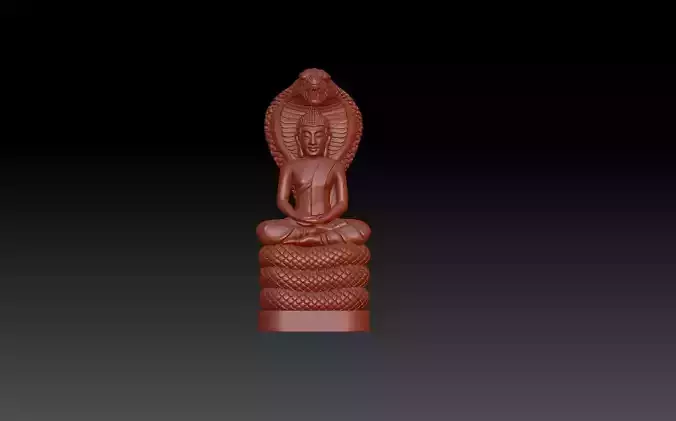1/6
The image of the Buddha sheltered by a serpent (or nāga) is a famous and symbolic representation in Buddhist art, particularly in Theravāda Buddhist traditions like those of Thailand, Laos, Cambodia, and Sri Lanka.
The Story Behind the Buddha and the SerpentThis scene depicts an event from the Buddha’s life during his meditation under the Bodhi tree just before his enlightenment. According to the legend:
After renouncing extreme asceticism, the Buddha sat in deep meditation under the Bodhi tree, determined to attain enlightenment.
As he meditated, a great storm arose, with heavy rains and fierce winds.
Muchalinda (or Mucalinda), the king of serpents (nāga), emerged from beneath the earth and coiled his body around the Buddha to protect him from the storm.
The nāga then spread his hood (or multiple heads) over the Buddha like an umbrella, shielding him until the storm passed.
Once the weather cleared, Muchalinda transformed into a young man, paid homage to the Buddha, and returned to his realm.
Symbolism of the Buddha with the NāgaProtection & Compassion: The nāga represents the protective forces of nature that aided the Buddha on his path.
Triumph Over Obstacles: The storm symbolizes Mara’s (the demon of illusion) attempts to distract the Buddha, while the nāga’s shelter signifies divine protection.
Harmony with Nature: The story highlights the Buddha’s deep connection with all beings, even powerful serpent spirits.
Artistic DepictionsIn Thai Buddhism, this scene is commonly depicted in temples, showing the Buddha seated in meditation with the nāga’s coils beneath him and its hood(s) arching over his head.
In Cambodian and Lao art, the nāga often has multiple heads (usually seven or nine).
Some interpretations also link this imagery to water and fertility, as nāgas are associated with rivers and rains.
REVIEWS & COMMENTS
accuracy, and usability.






